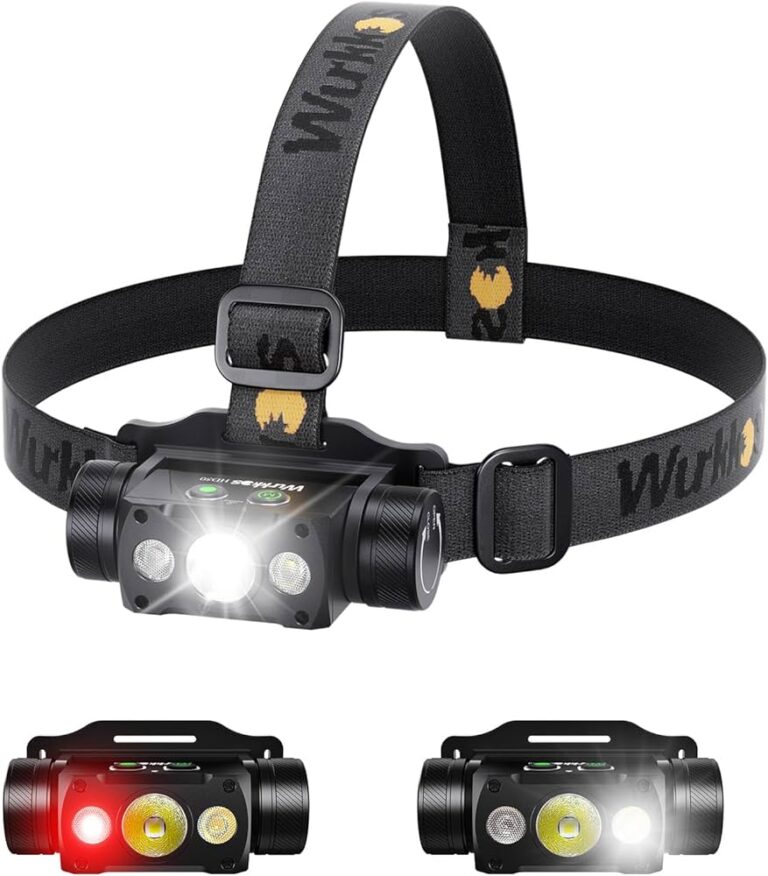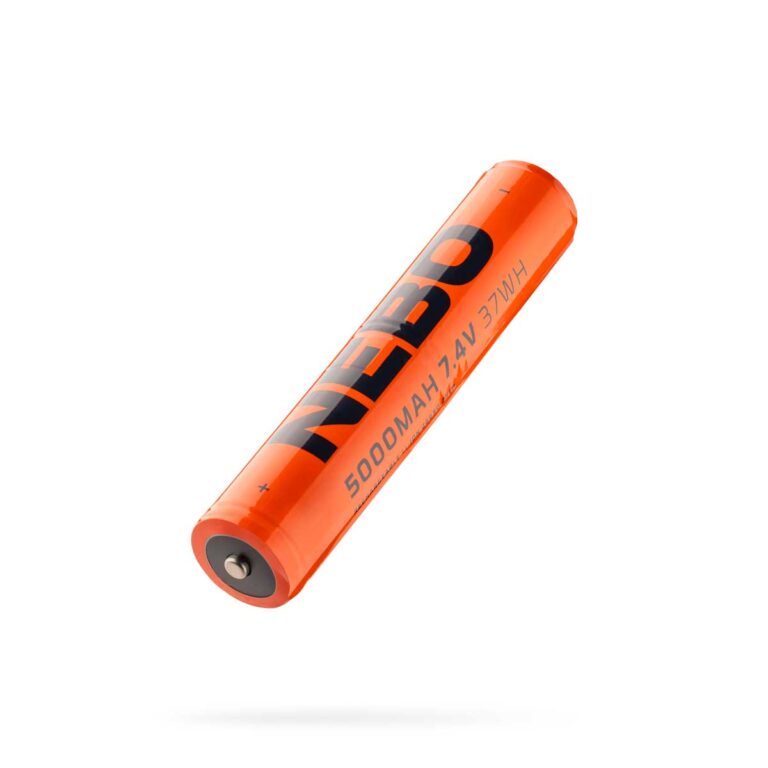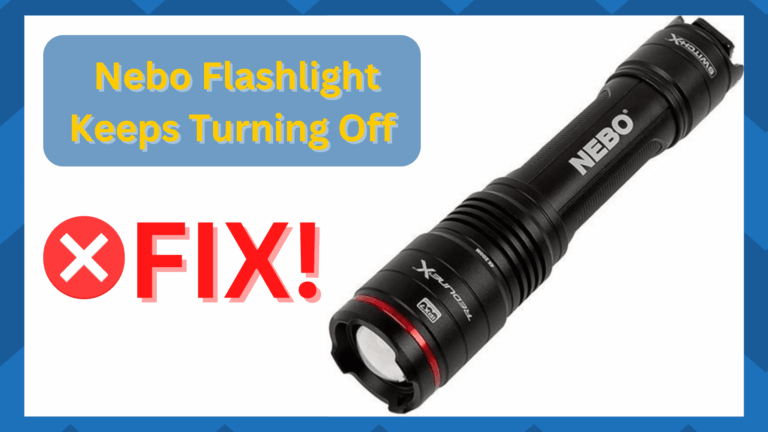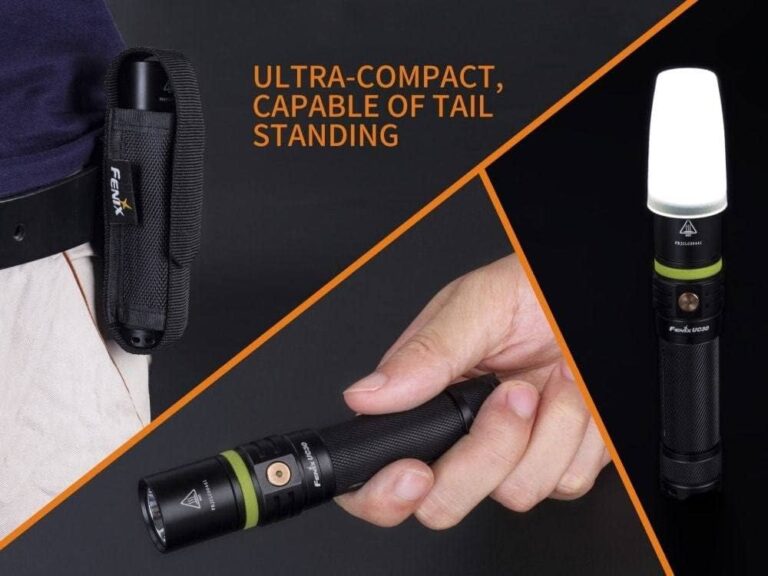Coast Flashlight Battery Replacement: A Complete Guide
Coast flashlights are renowned for their reliability and performance, making them a popular choice for outdoor enthusiasts, emergency kits, and everyday use. However, like any battery-operated device, they require regular maintenance to ensure optimal functionality.
One of the most crucial aspects of maintaining a Coast flashlight is knowing when and how to replace its batteries. In this comprehensive guide, we will delve into the various battery types used in Coast flashlights, how to identify when a battery replacement is necessary, and provide a detailed, step-by-step process for changing the batteries.
Additionally, we will address common issues that can arise during battery replacement, offer troubleshooting tips, and recommend where to purchase quality replacement batteries. By the end of this guide, you will have all the knowledge needed to keep your Coast flashlight in peak condition, ensuring it’s always ready when you need it the most.
Table of Contents
- Understanding Your Coast Flashlight Battery Needs
- Signs Your Battery Needs Replacement
- How to Open Coast Flashlights for Battery Replacement
- Step-by-Step Battery Replacement Process
- Troubleshooting Common Battery-Related Issues
- Where to Buy Replacement Batteries
- Advantages of Using Coast Rechargeable Batteries
- Alternative Battery Conversion Options
- FAQ
- Conclusion
Understanding Your Coast Flashlight Battery Needs
To ensure your Coast flashlight operates efficiently, it’s essential to understand the different battery types compatible with various models. Coast flashlights typically utilize several battery types, including AA, AAA, and lithium-ion options.
This section will explore these common battery types, their expected lifespans, and compatibility with different flashlight models.
Common Battery Types
Coast flashlights primarily use the following battery types:
- AA Batteries: These are standard batteries widely used in many Coast flashlight models, such as the G25 and G32.
- AAA Batteries: Smaller than AA, these are used in compact models like the HP3R.
- Lithium-Ion Batteries: These rechargeable batteries are often found in advanced models, providing longer runtimes and quicker recharging capabilities.
Battery Life Expectations
The battery life of Coast flashlights can vary significantly based on the model and usage. For instance, AA batteries can provide a runtime of up to 64 hours, depending on the flashlight’s power setting and usage patterns.
Lithium-ion batteries, on the other hand, often deliver superior performance, with many models lasting several hours on a single charge.
Compatibility with Different Models
Understanding the compatibility of batteries with specific Coast flashlight models is crucial for effective operation. Here’s a comparison of battery types and their associated Coast flashlight models:
| Battery Type | Example Models | Average mAh Rating |
|---|---|---|
| AA | G25, G32 | 2500-3000 mAh |
| AAA | HP3R, G4 | 1000-1200 mAh |
| Lithium-Ion | HP8R, TX9R | 2000-3000 mAh |
The table above illustrates the common battery types used in Coast flashlights, along with typical models and their mAh ratings. Understanding these specifications can help users select the right batteries for their flashlights.
For example, while AA batteries typically offer a longer runtime, lithium-ion batteries can be recharged multiple times, making them a cost-effective and environmentally friendly option in the long run.
Signs Your Battery Needs Replacement
Recognizing when your flashlight batteries need replacing is key to avoiding unexpected failures, especially during critical moments. Here are several indicators that your Coast flashlight may require a battery change.
Dim Light Output
One of the most obvious signs that your flashlight batteries need replacing is a noticeable decrease in light output. If your Coast flashlight, which usually emits a bright beam, begins to shine dimly, it’s time to check the batteries.
A drop in brightness can significantly impact visibility in low-light conditions.
Flickering or Inconsistent Light
Flickering or intermittent beam is another common symptom of dying batteries. If your flashlight flickers when turned on or fails to maintain a steady beam, it’s likely that the batteries are nearing the end of their life and should be replaced.
This issue can also arise from poor contact with the battery terminals, emphasizing the need for regular maintenance.
Physical Signs of Battery Leak
If you notice any signs of leakage around the battery compartment, such as corrosion or a white, powdery residue, it’s crucial to replace the batteries immediately. Leaking batteries can cause permanent damage to your flashlight and may pose safety risks.
Always inspect your flashlight regularly to avoid these issues.
| Symptoms | Condition | Action Required |
|---|---|---|
| Dim Light Output | Battery is low | Replace batteries |
| Flickering Beam | Battery contact issues | Replace or clean batteries |
| Corrosion or Leakage | Battery damage | Dispose of batteries and clean compartment |
The table above summarizes common symptoms, their implications, and the required actions. For instance, dim light output clearly indicates a need for battery replacement, while flickering could signal either low batteries or contact issues.
Regularly checking for corrosion not only helps maintain the flashlight’s integrity but also enhances safety during use.
How to Open Coast Flashlights for Battery Replacement
Opening a Coast flashlight can vary from model to model, but the process generally involves unscrewing the tail cap or front end. This section will provide detailed instructions on how to access the battery compartment.
Identifying the Correct End to Open
Most Coast flashlights have a clear distinction between the tail cap and the front lens. Typically, users should unscrew the tail cap (the end opposite the light) to access the battery compartment.
However, some models may have unique designs, so checking the user manual or product specifications is advisable.
Tools Needed for Stubborn Caps
Occasionally, the caps may become stuck due to corrosion or over-tightening. In such cases, using tools like rubber grips or pliers can provide the necessary leverage.
If using pliers, ensure to wrap the cap with a cloth to avoid damaging the flashlight’s exterior. Additionally, applying a small amount of lubricant like WD-40 can help loosen stuck components.
Safety Precautions When Opening
When opening your flashlight, ensure it’s turned off and avoid using excessive force. If corrosion is present, wear gloves to protect your hands from battery acid.
After opening, clean the battery contacts with a soft cloth to ensure good connection with the new batteries.
| Model | Opening Method | Tools Required |
|---|---|---|
| G25 | Unscrew tail cap | None |
| HP3R | Unscrew tail cap | Rubber grip (if stuck) |
| PX1 | Unscrew front lens | Pliers (if stuck) |
The table above highlights different Coast flashlight models and their corresponding opening methods. As seen, most models allow access through the tail cap, while the PX1 requires unscrewing the front lens.
Knowing the proper method helps prevent damage and ensures a smooth battery replacement process.
Step-by-Step Battery Replacement Process
Replacing batteries in a Coast flashlight is typically a straightforward process. Follow these detailed steps to ensure a proper replacement.
Removing Old Batteries
After successfully opening your flashlight, gently remove the old batteries. Pay attention to the orientation of each battery, noting which way the positive (+) and negative (-) ends are facing.
If the batteries are stuck, give the flashlight a gentle shake or tap against your palm to dislodge them.
Installing New Batteries
Once the old batteries have been removed, insert the new batteries in the same orientation as the previous ones. Ensure that each battery is seated properly within the compartment.
If using rechargeable lithium-ion batteries, ensure they are compatible with the model in question.
Closing the Flashlight Securely
After installing the new batteries, securely screw the tail cap or front lens back onto the flashlight. Ensure it is tight enough to prevent water or dust ingress but avoid over-tightening, which can cause damage.
Test the flashlight to confirm it is functioning properly before putting it away.
| Step | Action | Note |
|---|---|---|
| 1 | Open flashlight | Unscrew the appropriate end |
| 2 | Remove old batteries | Note orientation for new batteries |
| 3 | Insert new batteries | Match orientation |
| 4 | Screw cap back on | Ensure a secure fit |
The table provides a concise overview of the battery replacement steps. Following this guide ensures that users can replace batteries effectively without damaging their flashlights.
Proper orientation is crucial as incorrect installation can lead to malfunction or damage.
Troubleshooting Common Battery-Related Issues
Even experienced users can encounter problems when replacing batteries. This section addresses common issues and provides solutions to ensure your Coast flashlight remains reliable.
Dealing with Corroded Contacts
Corrosion can hinder battery performance and connection. If you observe any corrosion on the battery contacts, clean them carefully using a soft cloth and a solution like vinegar or baking soda mixed with water.
Ensure the contacts are dry before inserting new batteries.
What to Do if the Cap Won’t Budge
If the flashlight cap is stuck, avoid using excessive force. Instead, try applying a small amount of lubricant to the threads, or use rubber gloves for better grip.
If necessary, channel locks can be used carefully, ensuring not to damage the flashlight’s finish.
Ensuring Battery Compatibility
Always check that the batteries you are using are compatible with your specific flashlight model. Using incorrect batteries can lead to performance issues or even damage.
Refer to the user manual or product specifications for battery compatibility information.
| Issue | Symptoms | Solution |
|---|---|---|
| Corroded Contacts | Reduced performance | Clean contacts with vinegar solution |
| Stuck Cap | Inability to open | Apply lubricant, use rubber gloves |
| Incompatible Batteries | Flashlight not functioning | Check compatibility with the model |
The troubleshooting table summarizes common issues with their respective symptoms and solutions. For example, corrosion can severely impact performance, necessitating a thorough cleaning of contacts.
Understanding these issues can lead to quicker resolutions and enhanced longevity of the flashlight.
Where to Buy Replacement Batteries
Finding high-quality replacement batteries is essential for maintaining your Coast flashlight. This section provides guidance on where to purchase replacement batteries, both online and in local stores.
Online Retailers
Online platforms like Amazon and eBay offer a wide range of Coast flashlight batteries. These sites often provide customer reviews and competitive pricing, making it easier to find the best deals.
Additionally, specialty websites dedicated to flashlights and batteries can provide specific options for Coast products.
Local Hardware Stores
Many local hardware stores and outdoor supply shops carry replacement batteries for popular Coast flashlight models. This option allows customers to get immediate assistance from staff and avoid shipping delays.
Buying in Bulk vs. Single Purchase
Depending on your usage, you may consider buying batteries in bulk to save costs. Many retailers offer discounts for bulk purchases, which can be beneficial for those frequently using flashlights.
However, ensure that you can use the batteries within their shelf life to avoid wastage.
| Retail Option | Advantages | Disadvantages |
|---|---|---|
| Online Retailers | Wide selection, convenience | Shipping time, potential for damage during transit |
| Local Hardware Stores | Immediate access, in-person assistance | Limited stock, potentially higher prices |
| Bulk Purchase | Cost savings | Risk of batteries expiring before use |
The retail options table compares benefits and drawbacks of various purchasing avenues. For example, online retailers offer convenience and a broader selection, while local stores provide immediate access.
Bulk purchases can offer savings, but they must be managed carefully to avoid wastage.
Advantages of Using Coast Rechargeable Batteries
Switching to rechargeable batteries can provide several benefits for your Coast flashlight. This section will discuss the advantages of using Coast rechargeable batteries, including cost-effectiveness and environmental considerations.
Cost Savings Over Time
While rechargeable batteries may have a higher initial purchase price, they can lead to significant cost savings over time. With the ability to recharge hundreds of times, users can save on frequent battery replacements.
Coast’s Zithion-X rechargeable batteries, for instance, can last longer than traditional alkaline batteries, making them a financially viable option.
Environmental Considerations
By opting for rechargeable batteries, users contribute to reducing waste generated by disposable batteries. Many rechargeable options are designed with environmentally friendly materials and technology, promoting sustainability.
Coast’s Zithion-X batteries, certified as carbon-neutral, are an excellent example of environmentally conscious battery technology.
Performance Comparisons
Rechargeable batteries often deliver better performance than their disposable counterparts. Coast rechargeable batteries are engineered to maintain consistent voltage, ensuring optimal flashlight brightness.
In several tests, Coast rechargeable batteries outperformed standard alkaline batteries in both runtime and efficiency, providing users with reliable illumination when needed most.
| Battery Type | Cost per Cycle | Average Lifespan (Cycles) |
|---|---|---|
| Disposable Alkaline | $0.50 | 1-2 |
| Rechargeable NiMH | $0.20 | 500-1000 |
| Rechargeable Lithium-Ion | $0.15 | 1000-2000 |
The table comparing battery types highlights the cost-effectiveness and lifespan of rechargeable batteries. For example, while disposable alkaline batteries may seem cheaper initially, their limited lifespan results in a higher overall cost per cycle.
In contrast, rechargeable lithium-ion batteries offer superior longevity and lower costs per use, making them a more sustainable choice.
Alternative Battery Conversion Options
For advanced users, converting non-rechargeable Coast flashlight models to accept rechargeable batteries can be an appealing project. This section will outline potential conversion methods, tools needed, and considerations to keep in mind.
Tools Required for Conversion
Converting a flashlight typically requires basic tools such as screwdrivers, pliers, and possibly a soldering iron for electrical connections. Depending on the complexity of the conversion, additional tools like a Dremel tool for modifying battery compartments may also be necessary.
Steps for Conversion
The conversion process generally involves the following steps:
- Disassemble the flashlight to access the battery compartment.
- Measure the existing battery compartment to determine if it can accommodate the new battery size.
- If necessary, modify the compartment to fit the rechargeable battery securely.
- Reassemble the flashlight and test for functionality with the new battery installed.
Potential Risks and Considerations
While converting flashlights can be rewarding, there are risks involved. Improper modifications can lead to electrical shorts or damage to the flashlight.
Additionally, not all flashlights are designed to handle different battery types, so users must carefully consider compatibility before proceeding.
| Conversion Aspect | Details | Considerations |
|---|---|---|
| Tools Required | Screwdrivers, pliers, soldering iron | Ensure you have all necessary tools before starting |
| Steps | Disassemble, measure, modify, reassemble | Follow steps carefully to avoid damage |
| Risks | Electrical shorts, compatibility issues | Consider risks before undertaking conversion |
The table summarizes essential aspects of flashlight conversion, including tools, steps, and associated risks. Understanding these factors can help users make informed decisions about whether to attempt a conversion, ensuring they are prepared for any potential challenges.
FAQ
What type of batteries do Coast flashlights use?
Coast flashlights commonly use AA and AAA batteries, as well as lithium-ion rechargeable batteries. The specific type depends on the model and its design.
How do I know when to replace my flashlight batteries?
Indicators include dim light output, flickering beams, or signs of battery leakage. If your flashlight shows any of these symptoms, it’s time to replace the batteries.
Can I use rechargeable batteries in all Coast flashlights?
Not all models are compatible with rechargeable batteries. Check the specifications for your specific model to ensure compatibility before using rechargeable options.
What should I do if my flashlight won’t open?
If the cap won’t budge, try applying lubricant and using rubber gloves for a better grip. If stuck, use tools carefully to avoid damaging the flashlight.
Where can I purchase replacement batteries for my Coast flashlight?
Replacement batteries can be found at local hardware stores, online retailers such as Amazon and eBay, or specialty flashlight websites. Always verify compatibility with your specific model.
Conclusion
Maintaining your Coast flashlight through proper battery replacement is essential for ensuring optimal performance and longevity. By following the guidelines provided in this article, users can confidently replace batteries, troubleshoot issues, and explore alternative options like rechargeable batteries.
Regular maintenance not only enhances the flashlight’s efficiency but also contributes to a sustainable approach to usage. With a well-maintained flashlight, you can be prepared for any situation, whether it be a camping trip, emergency, or home repair task.







